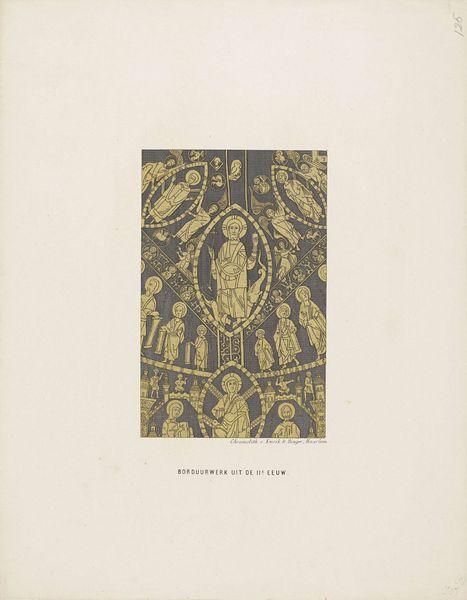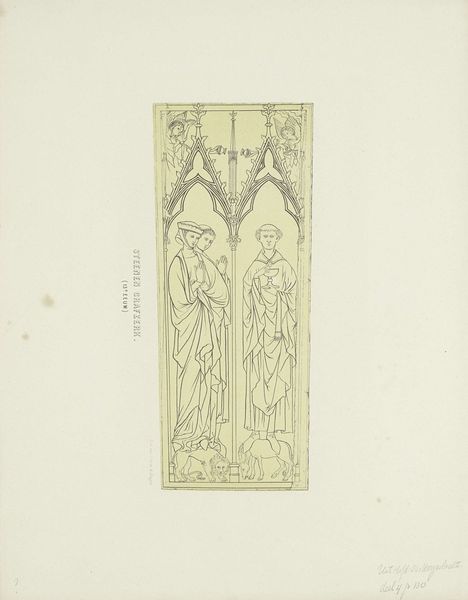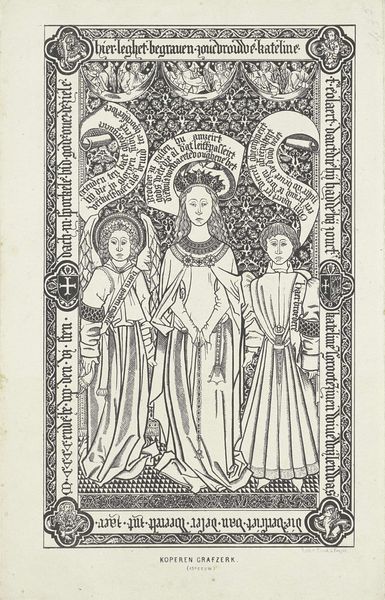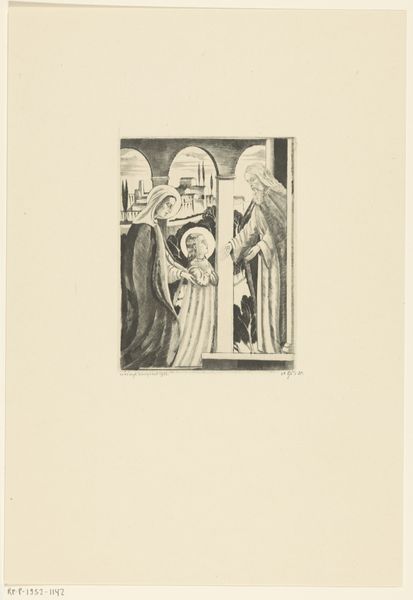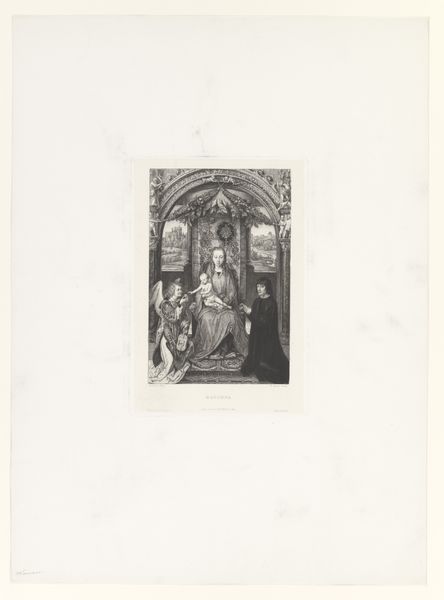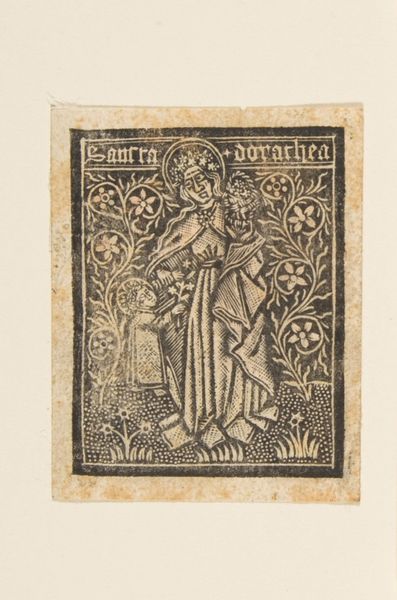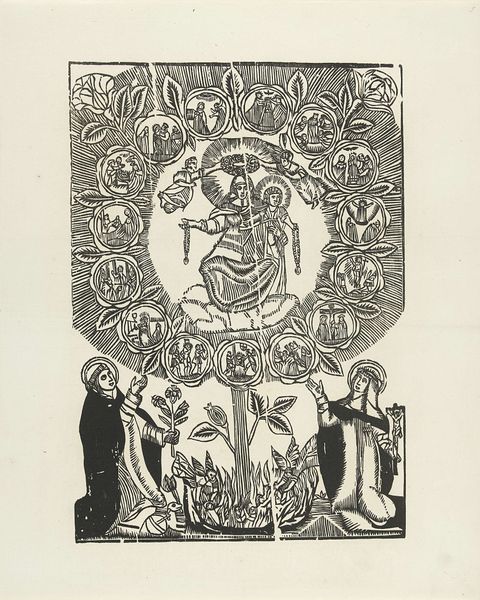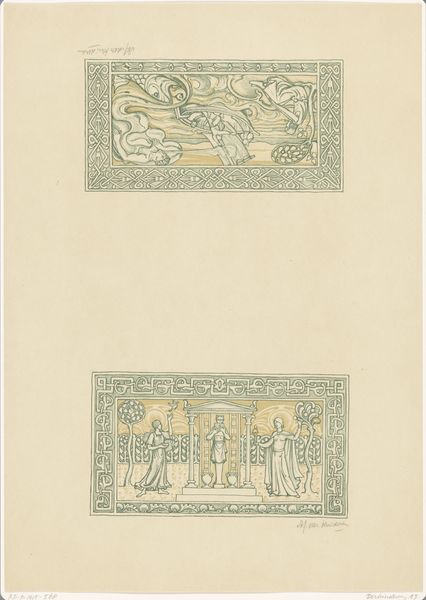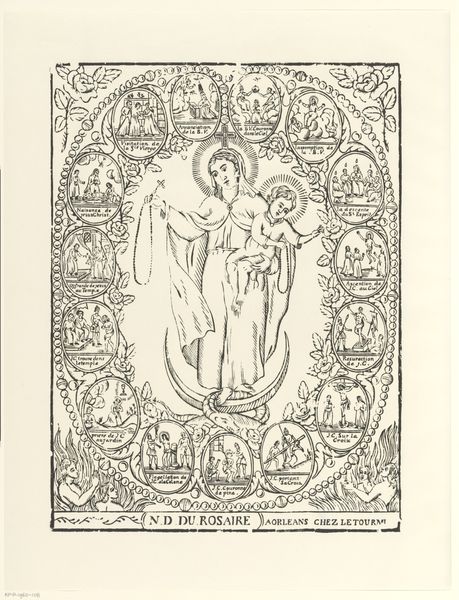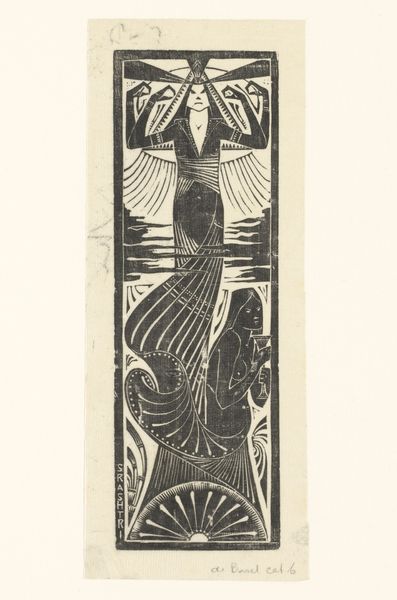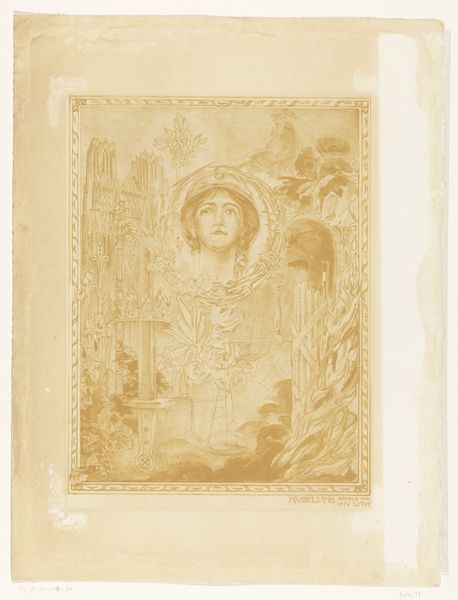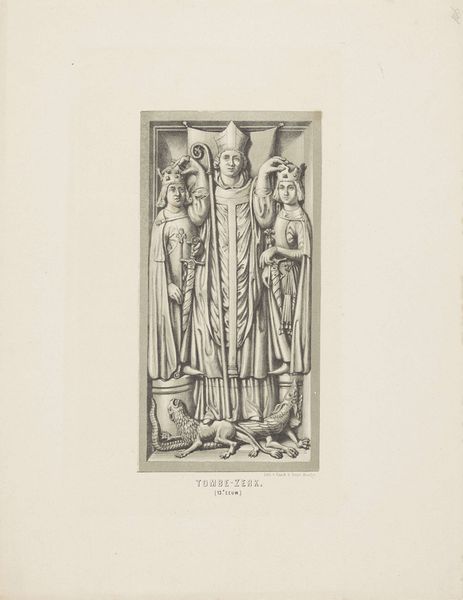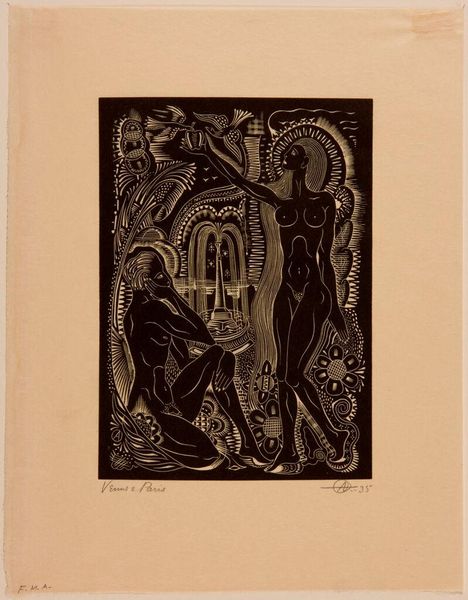
Dimensions: height 375 mm, width 292 mm
Copyright: Rijks Museum: Open Domain
This fifteenth-century copper tombstone inscription, made by an anonymous artist, offers a glimpse into the intersection of religious belief and social status. It is a memorial plate for a woman named Kateline. The image creates meaning through visual codes, cultural references, and historical associations. Made in the Netherlands, religion shaped much of the social life of the people at this time and inscriptions on tombstones were a frequent commission for artists. The tombstone appears progressive, in that it commemorates a woman, who is centered, and presumed to be the most important figure in the image. Inscriptions such as this one, and other records, help us to understand the social conditions that shape artistic production. A social history of the art allows us to reflect on the meaning of art as something that is contingent on social and institutional context.
Comments
No comments
Be the first to comment and join the conversation on the ultimate creative platform.
